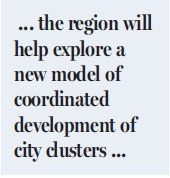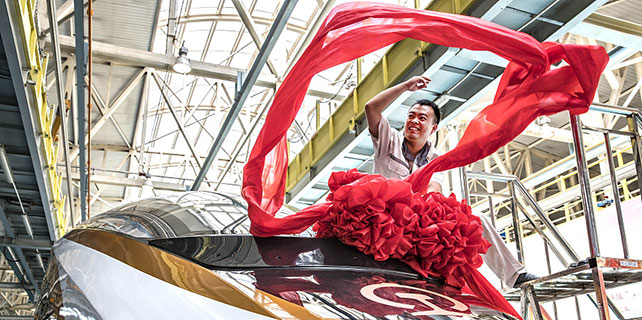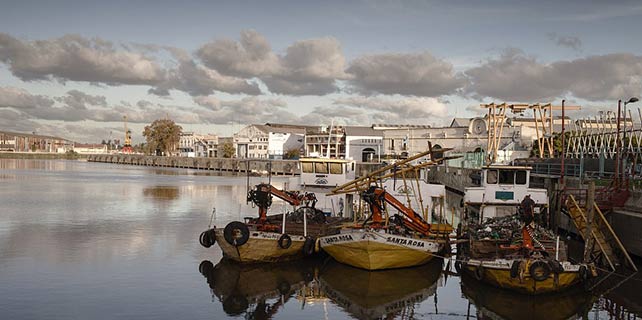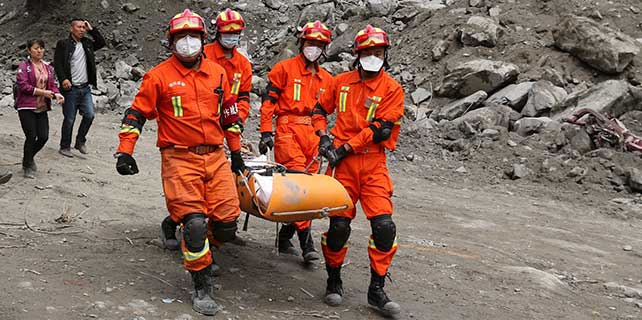Innovative coordination key to bay area
In March 2015, the National Development and Reform Commission, the Ministry of Foreign Affairs and Ministry of Commerce jointly issued a plan to promote the Belt and Road Initiative, and one of the aims is deepening cooperation with Hong Kong, Macao and Taiwan to develop the Guangdong-Hong Kong-Macao Bay Area. And in March last year, the State Council, China's cabinet, issued a guideline for deepening cooperation in the pan-Pearl River Delta region with the aim of developing the bay area of South China's Guangdong province and the Hong Kong and Macao special administrative regions into a world-class city cluster.
The Guangdong-Hong Kong-Macao Bay Area includes Hong Kong, Macao and the Pearl River Delta city cluster in southern China. Spreading over 50,000 square kilometers with a population of 68 million, the bay area has a GDP of $1.3 trillion, and is densely populated and economically prosperous.
Given these factors, the Guangdong-Hong Kong-Macao Bay Area has the potential to be developed into the world's fourth-largest bay area - after the New York Bay Area and San Francisco Bay Area in the United States, and the Tokyo Bay Area in Japan. By realizing that potential, the authorities can ensure the long-term prosperity of Hong Kong and Macao and facilitate the rapid growth of the pan-PRD region.

It will also make the region a significant economic growth pole driving the development of Mid-South and Southwest China. And by becoming a gateway to the Belt and Road Initiative, the region will help explore a new model of coordinated development of city clusters under the framework of "one country, two systems".
But for that to happen, the Guangdong-Hong Kong-Macao Bay Area should focus on the following aspects:
First, it should enhance infrastructure connectivity, especially deeper infrastructure connectivity, with economies along the Belt and Road. China and the Indochinese Peninsula Economic Corridor and the Bangladesh-China-India-Myanmar Economic Corridor should be built to form an infrastructure system that will meet the region's social and economic development needs and ensure comprehensive transportation connectivity.
Second, the bay area must build an open collaborative innovation system to facilitate the development of a global innovative hub. It should also make efforts to build a global technological innovative platform and improve its innovative cooperation mechanism, so as to develop into an important technological and industrial innovation center with global influence.
Third, it should enhance economic and trade cooperation with economies along the Belt and Road routes, especially the ASEAN member states and South Asian countries, promote liberalization of service trade in Guangdong, Hong Kong and Macao, and help develop an updated version of the Closer Economic Partnership Arrangement.
Fourth, the bay area should aim to occupy the high-end of the global value chain, and accord priority to upgrading manufacturing and developing strategic emerging industrial clusters, including new generation information technology, biotechnology, high-end equipment, new materials and new energy.
Fifth, it must develop a financial core circle, deepen financial cooperation among Guangdong, Hong Kong and Macao, and become a financial hub that serves the Belt and Road Initiative. Plus, Hong Kong should strengthen its position as an international financial center next only to New York and London.
And sixth, the bay area must help build a quality life circle by improving people's livelihoods, developing into an international education center, strengthening its employment and entrepreneurship system, and promoting a green, livable and tourist-friendly world-class city cluster.
Coordination among city clusters is critical to regional development, and since Hong Kong and Macao are governed according to the principle of "one country, two systems", at present we can only promote close connectivity and deeper cooperation between the Chinese mainland and the two special administrative regions. But there is no denying that innovative coordination and cooperation is the key to the success of the Guangdong-Hong Kong-Macao Bay Area under the framework of "one country, two systems", and city clusters in the whole of China.
The author is a researcher at the Institute of Industrial Economics, Chinese Academy of Social Sciences.
(China Daily USA 06/26/2017 page12)
















